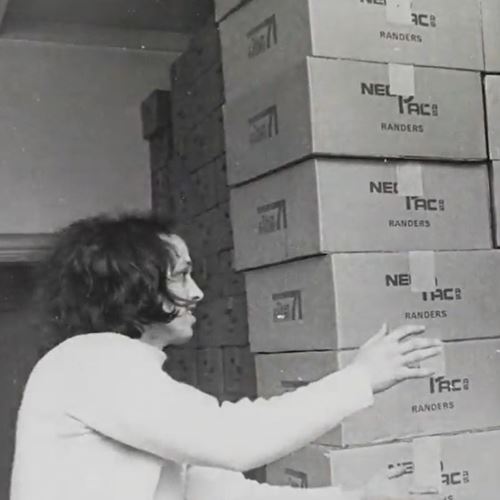DRC's history
The story of DRC Danish Refugee Council begins in 1956, with a few concerned people opening their arms and working together to welcome Hungarian refugees to Denmark.

Since 1956
On the night of November 30,1956, a train from Vienna chugged into Padborg station with 1,000 Hungarians on board. The volunteers on the platform welcomed them with hot tea and pastries, while musicians played Hungarian folk songs. The Danish government had decided to offer shelter to a share of the 200,000 Hungarians fleeing the violence of the Soviet crackdown in their country.
In the days leading up to the train’s arrival, at the request of the Ministry of Foreign Affairs, local groups were working around the clock to find housing and prepare all necessities for the newcomers. Among these was Danish Refugee Council, a small organization established by Børge Thøfner and associates.
After the Hungarian crisis, Danish Refugee Council was scheduled to close. But as we now know, things didn't quite work out that way. Today, Danish Refugee Council is Denmark's largest NGO, with an annual turnover of three billion Danish kroner and 9,000 employees in 40 countries around the world. It’s been ranked as one of the top three best NGOs worldwide.
A huge step for a small organization
'Help' is a word we humans use often. When we ask for help to move something heavy, make a difficult decision, or when we offer it to a friend in need who would never ask. But we don’t always stop to consider how valuable a helping hand can really be. For those in need, it can make a world of difference. And for those with the energy and willingness to offer, it can feel just as important. When a train full of Hungarian refugees rolled into Padborg station on a winter night in November 1956, it was the start of something huge for a small Danish humanitarian organization.
The organization was initially formed temporarily, for the sole purpose of providing shelter and welcoming the Hungarian refugees. But Hungary was not a unique case. Many more needed help. And that's how the Danish Refugee Council came to be. With one conflict seeming to follow another, and thousands around the world remaining in need, the world simply needed the organization.
This instability around the world means that more and more people are seeking protection in Denmark. Here, Danish Refugee Council staff stands ready to help, along with a large number of volunteers who are an indispensable force in the organization. But the vast majority of all refugees remain in hotspots around the world, so around the turn of the millennium the Danish Refugee Council decided to significantly expand its international work. Then and now, DRC’s benchmarks are quality, flexibility, drive and rapid professional response.
Today a cooperation agreement gives Danish Refugee Council preferred partner status with the UN, and the organization is present in the world's most critical hotspots. In 2012, it was the first international organization able to help displaced people inside Syria itself.
Worldwide, these efforts are being noticed, and in 2013 the Global Journal declared Danish Refugee Council to be the world's best humanitarian organization. Since then, the Danish Refugee Council has continued to be ranked among the world's very best international humanitarian organizations.
Today, the world is experiencing the largest refugee crisis since World War II. Never before have we helped in so many places in the world. And never before have there been so many in need of that help. Danish Refugee Council. We are there.